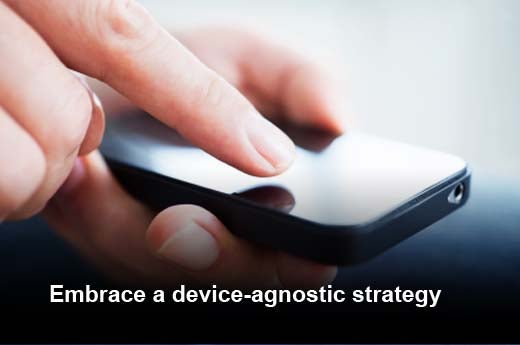In today’s business world everything is mobile and mobility must be considered as the mainstream, not the exception. All employees, from field workers to office users, manager and CIOs, must be able to access information and mission-critical programs via multiple mobile systems – it’s no longer acceptable to only access these systems through a desktop or one-device model.
With this new standard, it’s important to follow the following best practices, identified by Gil Bouhnick, director of mobile solutions at ClickSoftware, when implementing your next mobile project.
Click through for five best practices that can help you launch a successful mobile enterprise project and provide your employees with needed access to mission-critical apps, as identified by Gil Bouhnick, director of mobile solutions at ClickSoftware.
With technology ever changing and evolving, there are no guarantees, but there are ways to minimize the dependencies on specific technologies or processes in a way that will make your strategy more durable to changes.
When you compose your mobile strategy, consider the following factors:
- Think beyond existing devices and technology.
- Be ready to support additional employees and departments in your organization from day one.
- Imagine each employee is using three devices, sometimes in parallel (smartphone, tablet, desktop/laptop).
- Imagine most of your users are accessing your systems beyond the working hours, during weekends and even vacations.
Although consumer mobile technologies are very simple and easy to use, in the business world there are still challenges. The key is to set a high bar, but also be prepared to compromise. In many cases, there will be things that cannot be implemented in the first phases.
In many areas, there will be a conflict between management needs (reporting, visibility) and the basic mobile needs to keep things simple. As a rule of thumb, mobile software that is designed by the business managers will have a lot of reporting capabilities but will result in highly complicated processes, forms, and, as a result, poor satisfaction in the field.
Build a device-agnostic strategy to enable your organization to easily and successfully utilize multiple devices, future BYOD strategy and other ongoing needs.
To do so, consider the following:
- Don’t let IT dictate a specific device – devices are meant to serve the users, not the IT department.
- Be prepared for BYOD – it is not likely to go away despite all the security challenges it brings.
- Implement an MDM. Do it yesterday.
Think about the changes seen in the past 15 years in enterprise software, where desktop applications switched from native to Web. The same is likely to happen to enterprise mobility. Eventually, everything will be mobile, and everything will be Web. While HTML5 is not always as strong as native apps, it adds a great deal of flexibility and enables an organization to support a variety of devices.
Prepare for hybrid devices: WebTops, LapDocks, PadFones, Surface — they are coming faster than you think. Explore Windows 8 as part of your long-term mobile strategy. Windows 8 is all about mobile.








